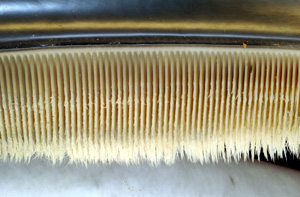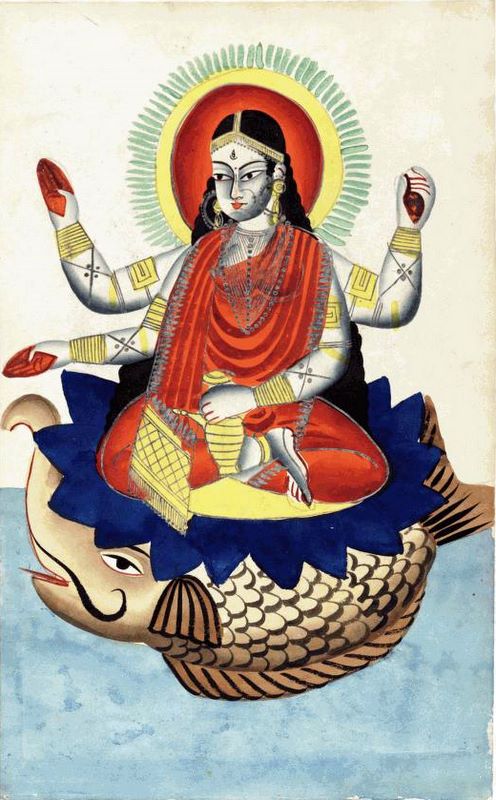|
Backscratcher
A backscratcher, sometimes known as a scratch-back, is a tool used for relieving an itch in an area that cannot easily be reached just by one's own hands, typically the human back, back. Although the backscratcher was an early human invention, Primate, primates have been observed using similar tools. Composition and variation Backscratchers are generally long, slender, rod-shaped tools used to scratch one's back, with a knob on one end for holding and a rake (tool), rake-like device, sometimes in the form of a human hand, on the other end to perform the scratching. Many others are shaped like horse hooves or claws, or are telescoping to reach further down the back. Most modern backscratchers are typically made of plastic, bamboo, or metal. Examples throughout history can be found made of wood, whalebone, tortoiseshell material, tortoiseshell, keratin, horn, cane (grass), cane, ivory, baleen, and in some cases, narwhal tusks, due to the status afforded by relieving itches with ... [...More Info...] [...Related Items...] OR: [Wikipedia] [Google] [Baidu] |
Baleen
Baleen is a filter feeder, filter-feeding system inside the mouths of baleen whales. To use baleen, the whale first opens its mouth underwater to take in water. The whale then pushes the water out, and animals such as krill are filtered by the baleen and remain as a food source for the whale. Baleen is similar to bristles and consists of keratin, the same substance found in human fingernails, skin and hair. Baleen is a skin derivative. Some whales, such as the bowhead whale, have baleen of differing lengths. Other whales, such as the gray whale, only use one side of their baleen. These baleen bristles are arranged in plates across the upper jaw of whales. Depending on the species, a baleen plate can be long, and weigh up to . Its hairy fringes are called baleen hair or whalebone hair. They are also called baleen bristles, which in sei whales are highly calcified, with calcification functioning to increase their stiffness. Baleen plates are broader at the gumline (base). The p ... [...More Info...] [...Related Items...] OR: [Wikipedia] [Google] [Baidu] |
Human Back
The human back, also called the dorsum (: dorsa), is the large posterior area of the human body, rising from the top of the buttocks to the back of the neck. It is the surface of the body opposite from the chest and the abdomen. The vertebral column runs the length of the back and creates a central area of recession. The breadth of the back is created by the shoulders at the top and the pelvis at the bottom. Back pain is a common medical condition, generally benign in origin. Structure The central feature of the human back is the vertebral column, specifically the length from the top of the thoracic vertebrae to the bottom of the lumbar vertebrae, which houses the spinal cord in its spinal canal, and which generally has some curvature that gives shape to the back. The ribcage extends from the spine at the top of the back (with the top of the ribcage corresponding to the T1 vertebra), more than halfway down the length of the back, leaving an area with less protection betwe ... [...More Info...] [...Related Items...] OR: [Wikipedia] [Google] [Baidu] |
Whalebone
Baleen is a filter-feeding system inside the mouths of baleen whales. To use baleen, the whale first opens its mouth underwater to take in water. The whale then pushes the water out, and animals such as krill are filtered by the baleen and remain as a food source for the whale. Baleen is similar to bristles and consists of keratin, the same substance found in human fingernails, skin and hair. Baleen is a skin derivative. Some whales, such as the bowhead whale, have baleen of differing lengths. Other whales, such as the gray whale, only use one side of their baleen. These baleen bristles are arranged in plates across the upper jaw of whales. Depending on the species, a baleen plate can be long, and weigh up to . Its hairy fringes are called baleen hair or whalebone hair. They are also called baleen bristles, which in sei whales are highly calcified, with calcification functioning to increase their stiffness. Baleen plates are broader at the gumline (base). The plates have be ... [...More Info...] [...Related Items...] OR: [Wikipedia] [Google] [Baidu] |
Hindus
Hindus (; ; also known as Sanātanīs) are people who religiously adhere to Hinduism, also known by its endonym Sanātana Dharma. Jeffery D. Long (2007), A Vision for Hinduism, IB Tauris, , pp. 35–37 Historically, the term has also been used as a geographical, cultural, and later religious identifier for people living in the Indian subcontinent. It is assumed that the term ''"Hindu"'' traces back to Avestan scripture Vendidad which refers to land of seven rivers as Hapta Hendu which itself is a cognate to Sanskrit term ''Sapta Sindhuḥ''. (The term ''Sapta Sindhuḥ'' is mentioned in Rig Veda and refers to a North western Indian region of seven rivers and to India as a whole.) The Greek cognates of the same terms are "''Indus''" (for the river) and "''India''" (for the land of the river). Likewise the Hebrew cognate ''hōd-dū'' refers to India mentioned in Hebrew BibleEsther 1:1. The term "''Hindu''" also implied a geographic, ethnic or cultural identifier for ... [...More Info...] [...Related Items...] OR: [Wikipedia] [Google] [Baidu] |
Makara
Makara () is a legendary sea-creature in Hindu mythology. In Hindu astrology, Makara is equivalent to the Zodiac sign Capricorn. Makara appears as the vahana (vehicle) of the river goddess Ganga, Narmada, and of the god of the ocean, Varuna. Makara are considered guardians of gateways and thresholds, protecting throne rooms as well as entryways to temples; it is the most commonly recurring creature in Hindu and Buddhist temple iconography, and also frequently appears as a gargoyle or as a spout attached to a natural spring. Makara-shaped earrings called ''Makarakundalas'' are sometimes worn by Hindu deities, for example Shiva, Vishnu, Surya, and Chandi. Makara is also the insignia of the love god Kamadeva, who has no dedicated temples and is also known as ''Makaradhvaja'', "one whose flag depicts a makara". Etymology ''Makara'' is a Sanskrit word which means "sea-animal, crocodile". Several German scientists argued that makara is based on the dugong instead, based on rea ... [...More Info...] [...Related Items...] OR: [Wikipedia] [Google] [Baidu] |
Bidriware
Bidriware is a metal handicraft from the city of Bidar in Karnataka, India. It was developed in the 14th century C.E. during the rule of the Bahmani Sultans. The term "bidriware" originates from the township of Bidar, which is still the chief center of production. The metal used is white brass that is blackened and inlaid with silver. As a native art form, Bidriware obtained a Geographical Indications (GI) registry on 3 January 2006. Origins The origin of Bidriware is usually attributed to the Bahamani sultans who ruled Bidar in the 14th–15th centuries. Bidriware techniques and style are influenced by Persian art. The art form developed in the kingdom that was a mix of Turkish, Persian and Arabic influences which were intermingled with the local styles and thus a unique style of its own was born. Abdullah bin Kaiser, a craftsman from Iran was invited by the Sultan Ahmed Shah Bahmani to work on decorating the royal palaces and courts. According to some accounts, Kaiser work ... [...More Info...] [...Related Items...] OR: [Wikipedia] [Google] [Baidu] |
Bidar
Bidar ( ) is a city and headquarters of the Bidar district in Karnataka state of India. Bidar is a prominent place on the archaeological map of India, it is well known for architectural, historical religious and rich heritage sites. Picturesquely perched on the Deccan plateau, the Bidar fort is more than 500 years old and still standing strong. According to the book "Bidar Heritage" published by the state ''Department of Archaeology, Museums and Heritage'', of the 61 monuments listed by the department, about 30 are tombs located in and around Bidar city., explaining its nickname, "City of Whispering Monuments". The heritage sites in and around Bidar have become the major attraction for film shooting in recent years, with Bollywood making visits apart from Kannada film industry Bidar is home for the second biggest Indian Air Force training centre in the country. The Bidar Airport, IAF Station Bidar is used for advanced jet training of prospective fighter pilots on BAe Hawk air ... [...More Info...] [...Related Items...] OR: [Wikipedia] [Google] [Baidu] |
China
China, officially the People's Republic of China (PRC), is a country in East Asia. With population of China, a population exceeding 1.4 billion, it is the list of countries by population (United Nations), second-most populous country after India, representing 17.4% of the world population. China spans the equivalent of five time zones and Borders of China, borders fourteen countries by land across an area of nearly , making it the list of countries and dependencies by area, third-largest country by land area. The country is divided into 33 Province-level divisions of China, province-level divisions: 22 provinces of China, provinces, 5 autonomous regions of China, autonomous regions, 4 direct-administered municipalities of China, municipalities, and 2 semi-autonomous special administrative regions. Beijing is the country's capital, while Shanghai is List of cities in China by population, its most populous city by urban area and largest financial center. Considered one of six ... [...More Info...] [...Related Items...] OR: [Wikipedia] [Google] [Baidu] |
Claw
A claw is a curved, pointed appendage found at the end of a toe or finger in most amniotes (mammals, reptiles, birds). Some invertebrates such as beetles and spiders have somewhat similar fine, hooked structures at the end of the leg or Arthropod leg, tarsus for gripping a surface as they walk. The pincers of crabs, lobsters and scorpions, more formally known as their chelae, are sometimes called claws. A true claw is made of a hard protein called keratin. Claws are used to catch and hold prey in carnivorous mammals such as cats and dogs, but may also be used for such purposes as digging, climbing trees, self-defense and Personal grooming, grooming, in those and other species. Similar appendages that are flat and do not come to a sharp point are called nail (anatomy), nails instead. Claw-like projections that do not form at the end of digits but spring from other parts of the foot are properly named Spur (zoology), spurs. Tetrapods In tetrapods, claws are made of keratin and ... [...More Info...] [...Related Items...] OR: [Wikipedia] [Google] [Baidu] |
Bird
Birds are a group of warm-blooded vertebrates constituting the class (biology), class Aves (), characterised by feathers, toothless beaked jaws, the Oviparity, laying of Eggshell, hard-shelled eggs, a high Metabolism, metabolic rate, a four-chambered heart, and a strong yet lightweight Bird skeleton, skeleton. Birds live worldwide and range in size from the bee hummingbird to the common ostrich. There are over 11,000 living species and they are split into 44 Order (biology), orders. More than half are passerine or "perching" birds. Birds have Bird wing, wings whose development varies according to species; the only known groups without wings are the extinct moa and elephant birds. Wings, which are modified forelimbs, gave birds the ability to fly, although further evolution has led to the Flightless bird, loss of flight in some birds, including ratites, penguins, and diverse endemism, endemic island species. The digestive and respiratory systems of birds are also uniquely a ... [...More Info...] [...Related Items...] OR: [Wikipedia] [Google] [Baidu] |








